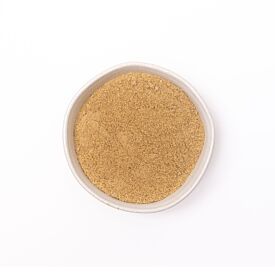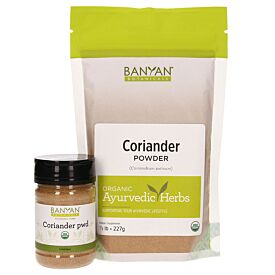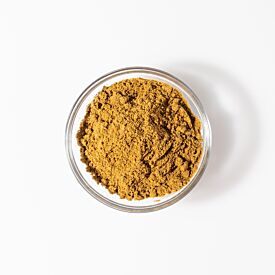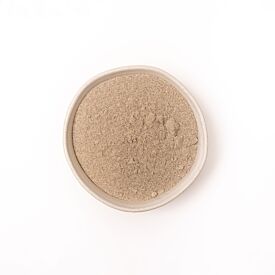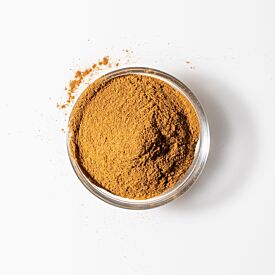Bringing Vitality and Flow to the Lymph
A 41 year-old (prakriti pitta-kapha) male visits with you wanting to prepare for a year of optimal wellness. Upon further questioning, he does mention that he has some congestion and phlegm every morning, feels sluggish (as if he can’t get out of holiday mode), and has a sense of heaviness throughout the day in his body, particularly in the chest area. You note that he is overweight (BMI of 39.5), his digestive fire is slow, and his tongue looks particularly glossy. He desires one diet, lifestyle, herbal, and yoga recommendation. Which of the following would you not include?
- Ginger tea with honey
- Bhastrika pranayama
- Abhyanga with little or no oil
- Afternoon nap
- Kapha Digest (Trikatu in tablet form) before meals
Answer: D
Our client has clear signs of rasa dhatu vruddhi (for more information read the first part of this series 10 Signs that You Need to Support Lymph Decongestion and Drainage), along with a weakened digestive fire (agni). All of the recommendations above help loosen and move wastes out of the body. The exception is an afternoon nap. Sleeping in the afternoon significantly augments kapha and contributes to inertia in the body. In fact, “an early to bed, early to rise” routine with increased activity during the day is the ideal for releasing excess kapha. The rest of this article will address the two essential steps to bring health to the lymphatic and plasma system (rasa dhatu): 1) cleansing the lymph and 2) expelling the wastes. Notice an emphasis on the digestive system. The central agni feeds the metabolic energy required to process excess kapha wastage (poshaka kapha) that lingers in the rasa dhatu. Further, the lymphatic system has an extensive and specialized network around the gut (known as GALT, or gut-associated lymphatic tissue) that feeds stagnation in the rest of the lymph network if the digestive system is weak and sluggish.
1) Detox the lymph of poshaka kapha
Poshaka kapha is exceptionally sticky and heavy. Being so, the first step must focus on making it lighter and more mobile so that it is free for elimination.
- Ginger tea with honey. Starting the day off with hot water awakens all organs and brings movement to the digestive organs, associated lymph, and general circulation. The warming ginger kindles not only the central agni but also the rasa dhatu agni, burning away stagnant wastes. Honey, though a sweetener, acts in a similar way.
- Souping and juicing. Juicing is a hot topic with cleanses and brings the benefits of nutrients in green vegetables and the cleansing nature of its roughage. But it can be taxing on the agni since it is uncooked and cold. Try souping instead! Cooking the food does part of the digestion before the food enters the mouth. If you are still keen on juicing, add fresh ginger and digestive spices (such as Cinnamon, Cardamom, Cumin, and Coriander) to the juice.
- Herbs. Healthy Kapha is a beautiful blend for both cleansing rasa dhatu and moving the excess kapha out of the system. Kapha Digest (Trikatu in tablet form) purifies the digestive tract, and its effects spread to rasa dhatu as well. Take this herb before meals for greatest impact.
- Liquid extracts. A liquid extract works beautifully not only because of the benefits of the herb, itself, but also because the alcohol helps in the digestion and assimilation of the herb when the agni may be weak. Consider Ginger and Tulsi Liquid Extract for this purpose.
- Sweet and salty foods. Do not forget to discourage the building of more poshaka kapha. The sweet and salty tastes worsen congestion and feed the growth of kapha.
2) Move the toxins out
Move circulation and support the organs of elimination from rasa dhatu (the liver and kidneys) to guide the toxins out of the body.
- Hydration. Focus on the right type of hydration. Cold brings density (and kapha is already dense) so encourage warm fluid intake throughout the day.
- Abhyanga and Garshana. Massage in the direction of lymph flow—from the extremities towards the heart. Use little oil (try Kapha Massage Oil for its kapha pacifying benefits) and dry brush (garshana) with chickpea flour afterwards for added lymph stimulation.
- Marma. Incorporating just a few marma points can have profound effects on the liver and kidneys. Angushtha mula, between the base of the thumb and forefinger, brings life to the liver and spleen as well as the general circulation. Steady pressure on Gulpha (on either side of the Achilles tendon just below the level of the medial and lateral malleolus or ankle bones) brings prana to the kidneys.
- Yoga and pranayama. Inspire your clients to use flow sequences and chest openers in their yoga practice. Pranayama, however, may be the most impactful, as its very purpose is to promote the flow of prana. The action of deep breathing stimulates circulation. Bhastrika pranayama heats the chest cavity and brings strong activity to the chest and abdomen. Kapalabhati stimulates circulation and massages abdominal organs, including the liver and kidneys. These simple steps to rasa dhatu wellness can set the foundation for vibrant health for the whole year to come. Our client is a classic example of seemingly distinct findings that, in actuality, are all connected within this one dhatu system.



